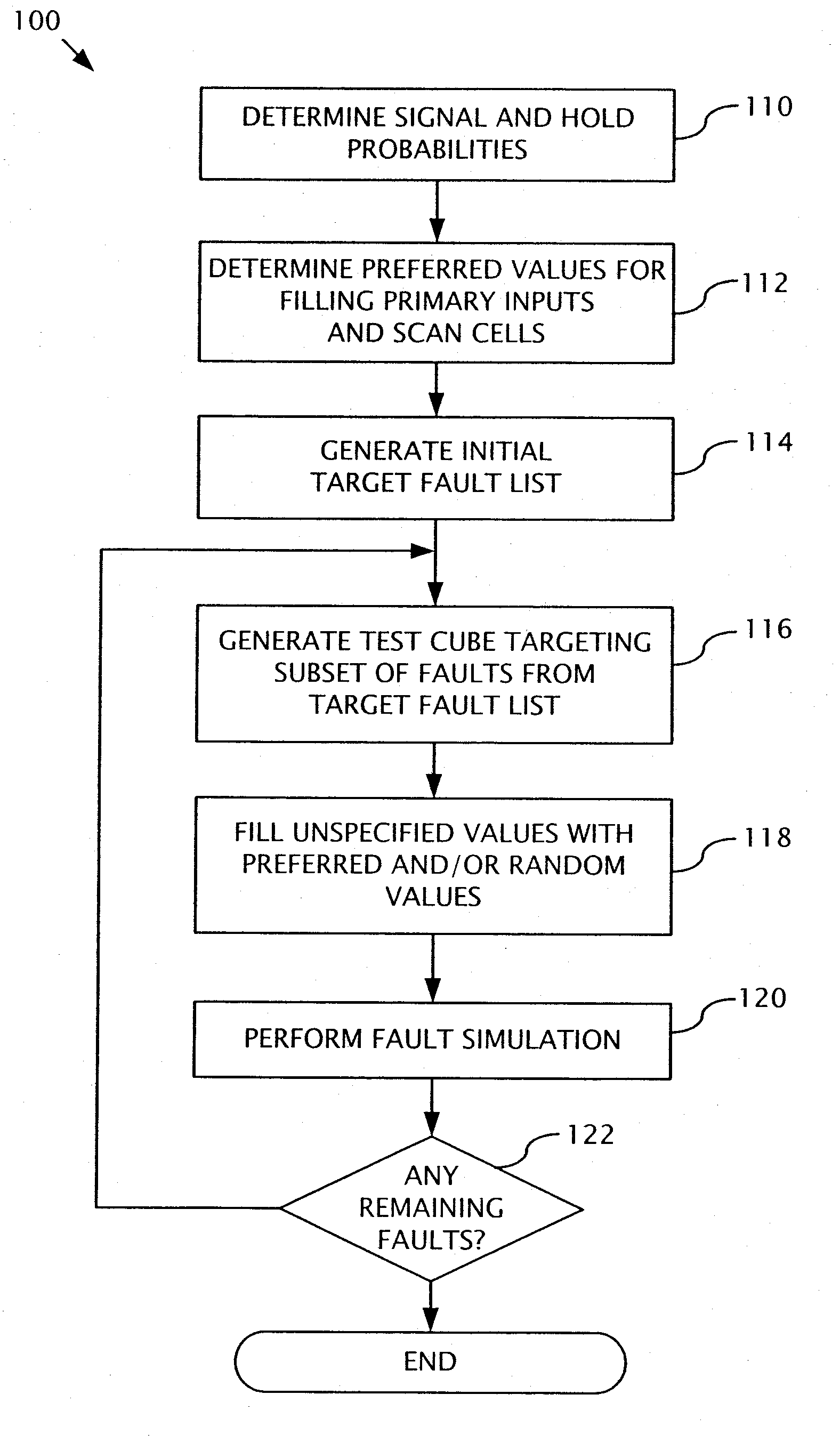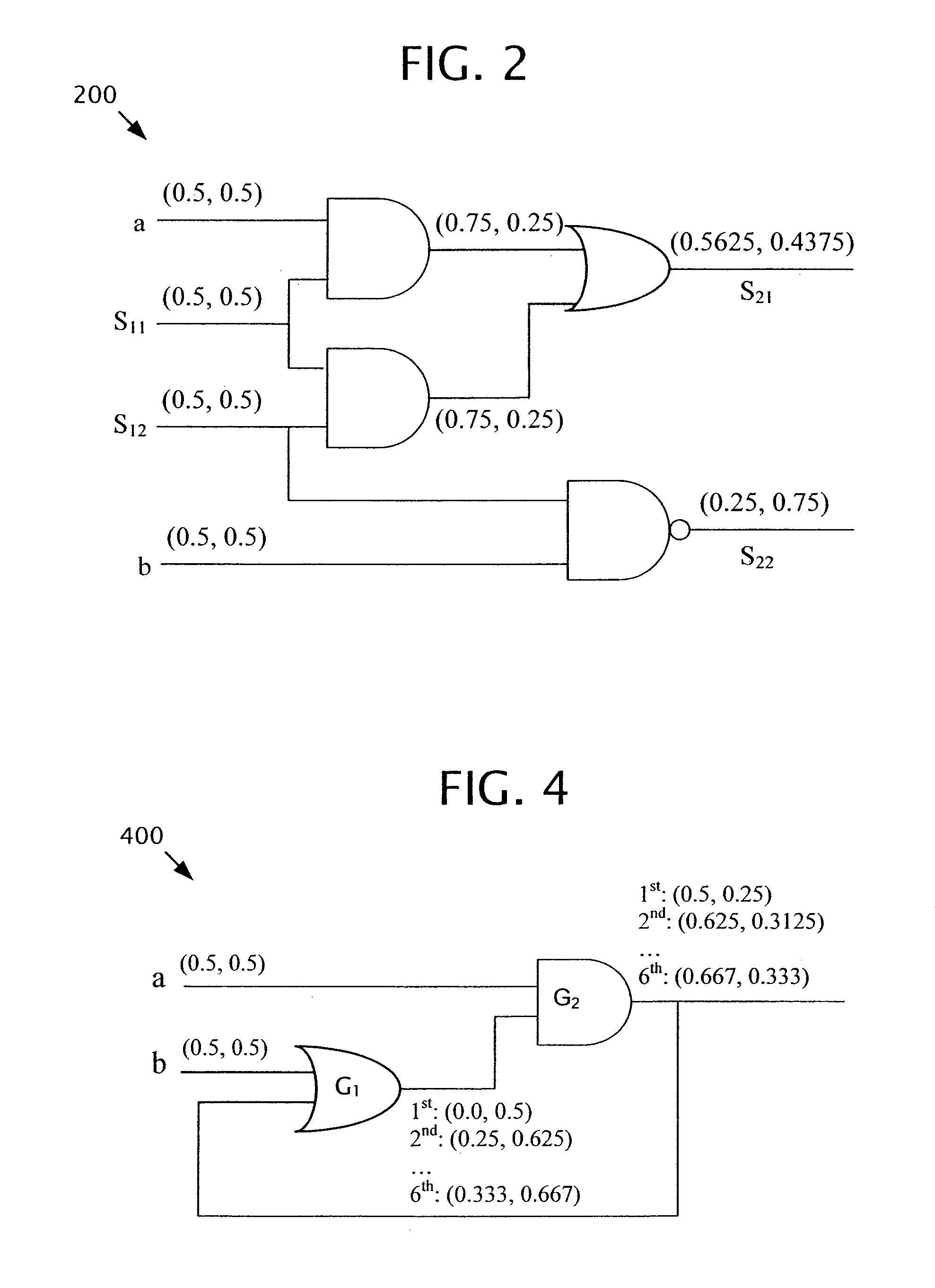Test generation methods for reducing power dissipation and supply currents
a technology of power dissipation and supply current, applied in the field of generating test patterns, can solve the problems of excessive switching activity, excessive switching, and high switching activity on the integrated circuit, and achieve the effect of reducing peak power, average power dissipation and/or supply current, and reducing power during testing
- Summary
- Abstract
- Description
- Claims
- Application Information
AI Technical Summary
Benefits of technology
Problems solved by technology
Method used
Image
Examples
Embodiment Construction
[0031]Disclosed below are representative embodiments of methods, apparatus, and systems used for generating test patterns as may be used as part of a test pattern generation process (for example, for use with an automatic test pattern generator (ATPG) software tool). The disclosed methods, apparatus, and systems should not be construed as limiting in any way. Instead, the present disclosure is directed toward all novel and nonobvious features and aspects of the various disclosed methods, apparatus, systems, and equivalents thereof, alone and in various combinations and subcombinations with one another. The present disclosure is not limited to any specific aspect or feature, or combination thereof, nor do the disclosed methods, apparatus, and systems require that any one or more specific advantages be present or problems be solved.
[0032]Although the operations of some of the disclosed methods, apparatus, and systems are described in a particular, sequential order for convenient prese...
PUM
 Login to View More
Login to View More Abstract
Description
Claims
Application Information
 Login to View More
Login to View More - R&D
- Intellectual Property
- Life Sciences
- Materials
- Tech Scout
- Unparalleled Data Quality
- Higher Quality Content
- 60% Fewer Hallucinations
Browse by: Latest US Patents, China's latest patents, Technical Efficacy Thesaurus, Application Domain, Technology Topic, Popular Technical Reports.
© 2025 PatSnap. All rights reserved.Legal|Privacy policy|Modern Slavery Act Transparency Statement|Sitemap|About US| Contact US: help@patsnap.com



